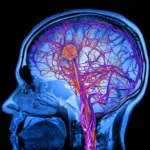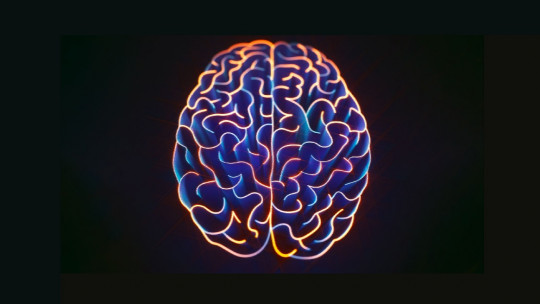
Apraxia is a movement disorder that prevents you from carrying out intentional acts without losing the physical ability or will to do so. And ataxia is a neurological disorder that causes a decrease in the coordination of movements.
Next, we will see what they are the main differences between apraxia and ataxia regarding its causes, clinical symptoms and the indicated treatment.
Ataxia: definition and types
Ataxia is a neurological disorder that affects the nervous system and causes a decreased ability to coordinate movements Affected people have problems coordinating muscles in different parts of the body, generally in the legs, arms and hands, although it can also affect swallowing or vision, for example.
Ataxia is not a disease in itself, but a sign that usually appears in a multitude of neurodegenerative processes who also suffer from other types of conditions. There are two types of ataxias: primary ones are degenerative and almost always of genetic origin; and secondary ones, whose origin can be diverse, such as metabolic, infectious, tumor, etc., the most frequent being ataxia caused by alcohol.
On the other hand, in the group of primary ataxias and depending on the hereditary form they have, two more large blocks can be described: the dominant ones, whose origin must be a single genetic mutation for the symptoms to manifest; and recessive ones, such as Friedreich’s ataxia, which manifests itself if two mutations are inherited (from the father and the mother), and are also usually sporadic cases.
Apraxia: definition and types
Apraxia is a neurological disorder characterized by loss of ability to carry out dexterous movements and purposeful gestures even having the physical ability and the will to do them.
People who suffer from apraxia have great difficulty performing required movements under a verbal command or out of context; however, Yes, they can execute them spontaneously in natural situations
There are different types of apraxias. The main ones are listed below:
Ideational apraxia
The person is unable to order a series of movements or actions that lead to a specific objective nor to create a mental image of the act that is going to be carried out.
Ideomotor
Implies the inability to implement motor skills due to an error in the sequence, amplitude, configuration and position of the members in space (for example, imitating a gesture).
Constructional
Difficulties organizing actions in space, such as writing or drawing.
Buccofacial, buccolingual or bucolinguofacial
Inability to make intentional movements with parts of the face, including the cheeks, lips, tongue and eyebrows.
Differences between ataxia and apraxia
Apraxia and ataxia are two disorders that affect the nervous system and may sometimes be confused with each other because they share certain aspects or clinical manifestations, such as the fact that both affect, in one way or another, the execution of certain body movements
However, as we will see below, there are notable differences between ataxia and apraxia, such as the causes that cause them, the symptoms and clinical signs or the treatment indicated for each of them.
Clinical manifestation
Ataxia, as we have mentioned previously, is a neurological sign that is characterized by a loss of muscle coordination ; It is, therefore, a type of movement disorder and what it causes is a lack of coordination that can affect various members and extremities of the body, such as the fingers, hands, arms, legs, eye movements or the mechanism of movement. swallowing
For its part, apraxia differs from ataxia in that it implies an inability of the subject to execute previously learned intentional movements. In this sense, in apraxia we can see how the subject presents a lack of performance when performing a task, despite wanting and having the ability to provoke the movements necessary to execute it
Causes
The causes that cause a neurological sign such as ataxia are different from those of apraxia. Ataxia is generally due to lesions in the cerebellum a structure of the brain that is responsible for processing information that comes from other brain areas, the spinal cord and sensory receptors, with the aim of being able to coordinate the movements of the skeletal muscular system.
A damaged cerebellum is the main cause that causes the classic symptoms of ataxias: inability to control and coordinate muscles. However, there are other causes that can cause ataxia: alcohol abuse, neurodegenerative diseases, certain drugs or diseases such as multiple sclerosis.
The causes of apraxias, however, are not usually related to lesions in the cerebellum, as is the case with ataxia. Normally, apraxias originate from damage to the parietal lobe of the dominant hemisphere (usually the left one), either due to neurodegeneration or due to a stroke, tumor or trauma.
In some cases, apraxias can also be caused by lesions in other areas of the brain, such as the premotor cortex (in charge of motor planning and sequencing, among other functions), the frontal cortex or the corpus callosum.
Treatment
Regarding ataxia, there is currently no specific treatment for this condition. The healthcare professional may recommend treatments for symptomatic control of pain or fatigue. Besides, adaptive devices, such as canes or walkers, modified utensils may be used to assist in eating communication devices, etc.
The patient with ataxia can also benefit from some therapies, such as: physical therapy, to improve coordination and mobility; occupational therapy, to help the person with the tasks of daily living; and speech therapy, to improve speech and help swallow better.
In relation to apraxia, it should be noted that there is no specific treatment indicated for this disorder. The therapies that are usually recommended are physiotherapy, occupational therapy and neuropsychological rehabilitation that includes the restoration or compensation of altered abilities, also taking into account those that are preserved.
The neuropsychological approach to apraxias It should include the following aspects: facilitating motor learning, working with the patient on error-free tasks, providing verbal and sensory feedback, and trying to work in real environments.








